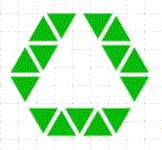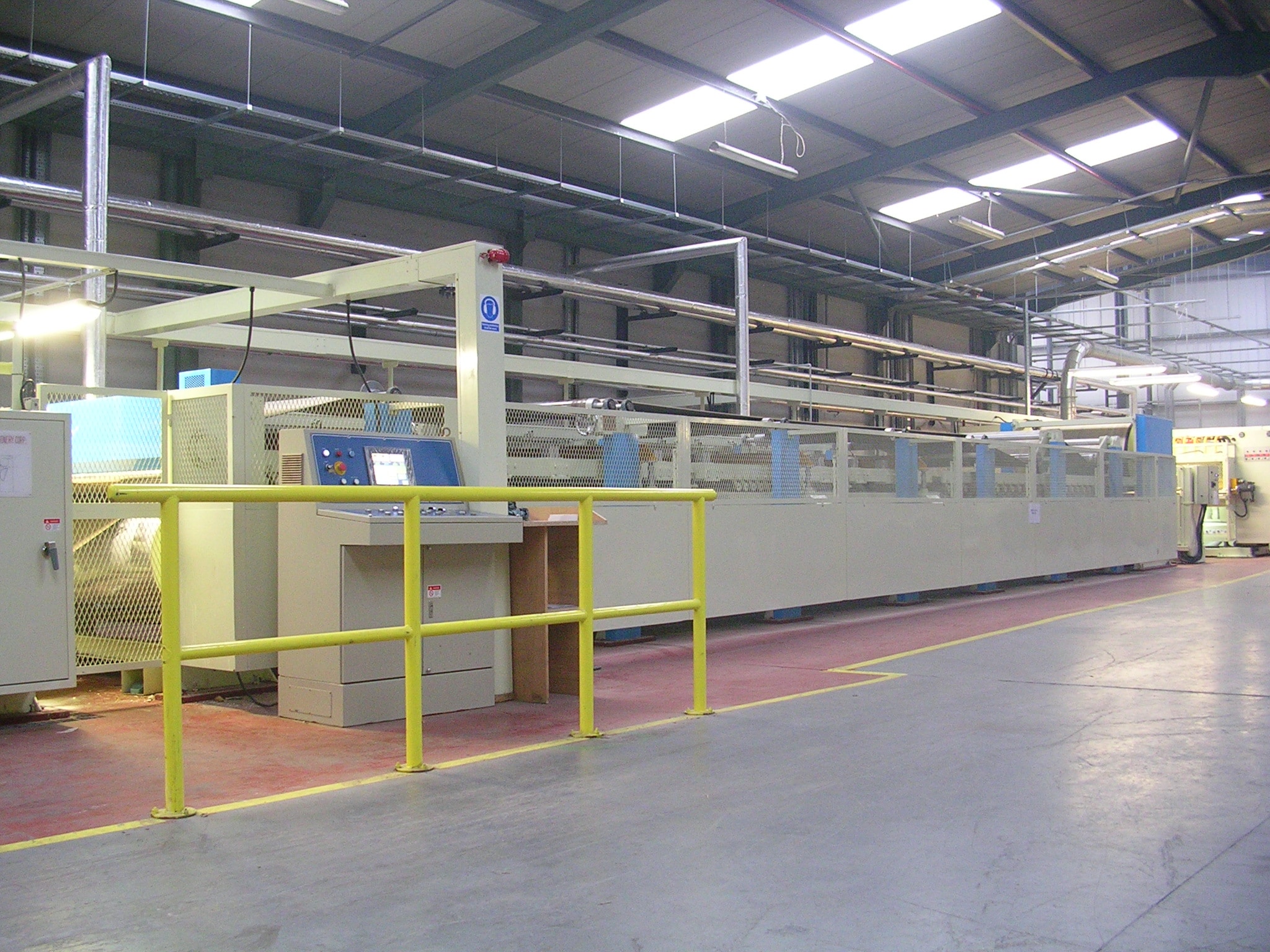Paper Board Laminating Machines:
The Versatile World of Paper Board Laminating Machines
In the realm of modern manufacturing, the ability to create high-quality, durable products is paramount. One integral piece of equipment that plays a crucial role in this process is the industrial paper board laminating machine. These versatile machines are the backbone of countless industries, enabling the production of a wide array of materials used in packaging, construction, and beyond.
The Fundamentals of Paper Board Lamination
At its core, paper board lamination is the process of bonding one or more layers of paper-based materials together to create a stronger, more durable composite product. This is typically achieved through the use of adhesives, heat, and pressure applied by specialised industrial laminating machines.
The primary materials used in paper board lamination include:
– Paperboard: A thick, stiff paper-based material commonly used in packaging, signage, and other applications requiring rigidity.
– Kraft paper: A strong, brown paper material made from wood pulp, often used for its durability and moisture resistance.
– Foil: Thin sheets of aluminum or other metallic materials, added for their reflective properties or barrier protection.
– Plastic films: Various plastic substrates, such as polyethylene (PE), polypropylene (PP), or polyethylene terephthalate (PET), which can provide water, grease, or abrasion resistance.
By combining these materials in strategic layers, paper board lamination can create products with enhanced structural integrity, thermal insulation, barrier properties, and visual appeal – all of which are crucial in industries ranging from food packaging to construction.

The Role of Industrial Paper Board Laminating Machines
Industrial paper board laminating machines are the workhorses that facilitate this lamination process on a large scale. These specialised machines are designed to efficiently and consistently bond multiple layers of materials together, resulting in a cohesive, high-quality laminated product.
The key components of a typical industrial paper board laminating machine include:
1. Unwinding stations: Used to feed the individual material rolls (paper, foil, plastic, etc.) into the machine.
2. Adhesive application system: Applies a precise amount of adhesive, such as hot melt or water-based glue, onto the material surfaces.
3. Lamination rollers: Apply pressure to the stacked materials, forcing the adhesive to spread evenly and creating a strong bond between the layers.
4. Drying/curing section: Utilises heat, airflow, or UV light to dry and cure the adhesive, solidifying the laminated structure.
5. Cutting and slitting capabilities: Allows the laminated web to be cut and slit into the desired sizes and shapes for sheet products.
6. Rewinding stations: Wind the finished, laminated product onto rolls for further processing or shipping.
These machines are designed to operate at high speeds, often reaching production rates of several hundred metres per minute, ensuring efficient and cost-effective manufacturing.
Key Features and Capabilities of Paper Board Laminating Machines
Industrial paper board laminating machines are engineered with a range of advanced features to meet the diverse needs of modern manufacturing:
1. Versatility: The best machines are capable of handling a wide variety of substrates, including paper, board, foil, films, and even fabrics, allowing manufacturers to create a vast array of laminated products.
2. Precision control: Sophisticated control systems and sensors enable precise control over factors such as adhesive application, web tension, temperature, and pressure, ensuring consistent, high-quality results.
3. Customisation: Many manufacturers offer tailored solutions, allowing customers to configure the machine’s components and settings to meet their specific production requirements.
4. Automation: Automated features, such as web splicing, roll handling, and inline inspection, help to minimize manual intervention and improve overall efficiency.
5. Sustainability: Advancements in adhesive and substrate technologies have led to the development of more environmentally friendly laminating solutions, reducing the environmental impact of the manufacturing process.
6. Safety and ergonomics: Modern industrial paper board laminating machines prioritise operator safety and ease of use, with features like guarding, emergency stops, and user-friendly interfaces.
These advanced capabilities make industrial paper board laminating machines a crucial asset for manufacturers across a wide range of industries, from packaging and construction to automotive and electronics.

Applications of Industrial Paper Board Laminating Machines
The versatility of industrial paper board laminating machines is on full display in the diverse range of applications they support:
1. Packaging: One of the most common uses of laminated paper board is in the production of packaging materials, such as food cartons, cereal boxes, and corrugated containers. The lamination process enhances the durability, moisture resistance, and visual appeal of these products.
2. Construction: Laminated paper board is also widely used in the construction industry, where it is employed in the manufacture of building materials like insulation panels, roofing under-layments and structural reinforcements.
3. Automotive: In the automotive sector, laminated paper board is utilised for a variety of components, including door panels, trunk liners, and dashboard inserts, providing lightweight, durable solutions.
4. Electronics: The electronics industry relies on laminated paper board, for the production of components such as circuit board substrates, display panels, and insulation materials.
5. Signage and displays: Laminate paper board is a popular choice for the creation of sturdy, weather-resistant signage and point-of-purchase displays, and high quality display boards offering a cost-effective alternative to traditional materials.
6. Specialty applications: Industrial paper board laminating machines are also employed in the manufacture of less common products, such as weatherproof labels, luxury packaging, and even musical instrument parts.
This diverse range of applications demonstrates the crucial role that industrial paper board laminating machines play in the modern manufacturing landscape, contributing to the development of a vast array of essential products.
The Manufacturing Process: A Closer Look
The process of creating laminated paper board products using industrial laminating machines is a carefully orchestrated dance of precision and efficiency. Here’s a closer look at the key steps involved:
1. Material preparation: The individual substrate materials, such as paper, foil, or plastic films, are carefully inspected, measured, and prepared for the lamination process. This may involve trimming, slitting, or other pre-processing steps to ensure consistent quality and dimensions.
2. Adhesive application: The adhesive, which can be a hot-melt, water-based, PVA or solvent-based formulation, is precisely applied to the substrate materials using specialised coating or spraying systems. The amount and distribution of the adhesive are carefully controlled to ensure optimal bonding.
3. Lamination: The prepared substrates are then brought together under high pressure, often using a series of lamination rollers. This forces the adhesive to spread evenly between the layers, creating a strong, uniform bond.
4. Drying and curing: Depending on the adhesive used, the laminated material may then undergo a drying or curing process, utilising heat, airflow, or UV light to solidify the bond and ensure the final product’s structural integrity.
5. Finishing: The laminated web may be further processed, including slitting & cutting into flat sheets, to create the final product dimensions and configuration. Or for rewinding of some products as required for the desired final product.
Throughout this process, advanced monitoring and control systems ensure that critical parameters, such as web tension, alignment, temperature, and adhesive application, are maintained within tight tolerances, resulting in a consistent high-quality product output.
The Future of Industrial Paper Board Laminating Machines
As the manufacturing landscape continues to evolve, industrial paper board and solid fibre board laminating machines are also poised for ongoing advancements and improvements. Some of the key trends and innovations shaping the future of this technology include:
1. Sustainability and environmental responsibility:
Driven by growing consumer and regulatory demands, manufacturers are investing in the development of more environmentally friendly laminating materials and processes, such as water-based adhesives and biodegradable substrates.
2. Increased automation and digitalisation:
The integration of Industry 4.0 technologies, including smart sensors, data analytics, and predictive maintenance, is enhancing the efficiency, flexibility, and overall equipment effectiveness (OEE) of industrial paper-board laminating machines.
3. Customisation and personalisation:
Advancements in machine design and control systems are enabling manufacturers to offer increasingly tailored solutions, catering to the unique requirements of individual customers and market segments.
4. Versatility and multi-functionality:
Ongoing innovations are expanding the range of materials and applications that industrial paper board laminating machines can handle, allowing manufacturers to diversify their product offerings and explore new market opportunities.
5. Improved safety and ergonomics:
Manufacturers are prioritising the well-being of machine operators, incorporating advanced safety features and ergonomic design elements to create a safer, more comfortable working environment.
As these trends continue to shape the industrial paper board laminating machine landscape, manufacturers and end-users alike. Can look forward to a future marked by greater efficiency, sustainability, and versatility – all of which will contribute to the ongoing success & growth of this vital manufacturing technology.
This article provides a comprehensive overview of industrial paper board laminating machines, covering the fundamentals of paper board lamination. The key features and capabilities of these machines, their diverse applications, and the manufacturing process involved. It also touches on the future trends and innovations shaping this technology.
This article would be a valuable resource for businesses and individuals interested in the world of industrial paper board laminating machines and the essential role they play in modern manufacturing.


